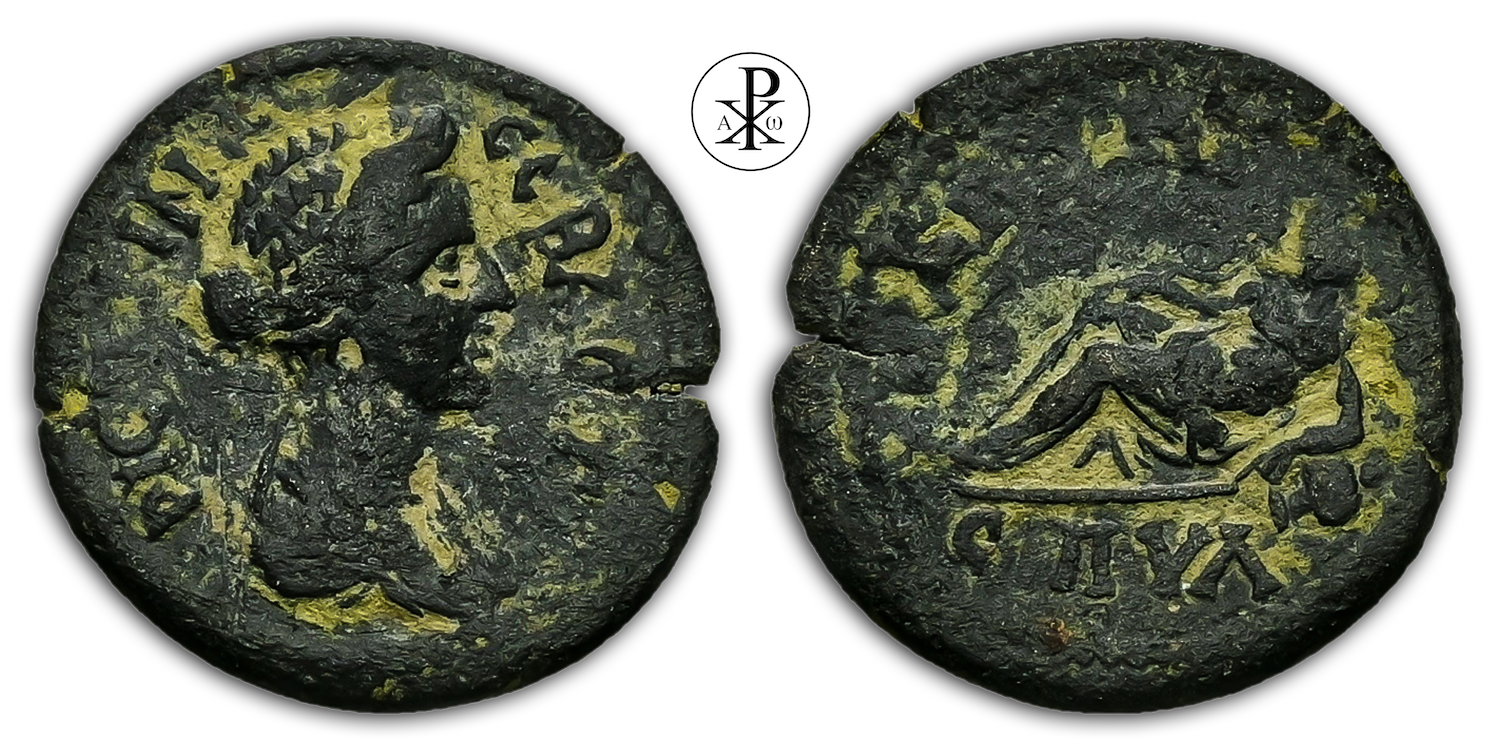Bruttia Crispina
Reign: Marcus Aurelius or Commodus
Mint: Magnesia ad Sipylum, Lydia
Date: 178/182 AD
Nominal: Bronze
Material: AE
Diameter: 20.98mm
Weight: 4.00g
Reference: RPC IV.2 1334 (#7 this coin)
Reference: Hochard 1082
RPC Online: https://rpc.ashmus.ox.ac.uk/coins/4/1334
Rare: Specimens 8 (5 in the core collections)
Provenance: Concordia Numismatik Tumeltsham, Austria (Auction 4, Lot 1310)
Pedigree: –
Obverse: Draped bust of Crispina, right
Inscription: ΚΡΙϹΠƐΙΝΑ ϹƐΒΑϹΤΗ
Translation: Krispeina Sebaste
Translation: Crispina Augusta
Reverse: Rivergod Hermos reclining, left, holding long reed, resting on water-urn
Inscription: ΜΑΓΝΗΤΩ ϹΙΠΥΛο
Translation: Magneton Sipulou
Translation: City of Magnesia ad Sipylum
Comment: Magnesia ad Sipylum (modern Manisa, Turkey) was a city of Lydia, situated about 65 km northeast of Smyrna (now İzmir) on the river Hermus (now Gediz) at the foot of Mount Sipylus. The city should not be confused with its older neighbor, Magnesia on the Maeander, both founded by colonists from the Greek region of Magnesia. The first famous mention of the city is in 190 BC, when Antiochus the Great was defeated in the battle of Magnesia by the Roman consul Lucius Cornelius Scipio Asiaticus. It became a city of importance under Roman rule and, though nearly destroyed by an earthquake in the reign of Tiberius, was restored by that emperor and flourished through the Roman Empire. It was an important regional centre through the Byzantine Empire, and during the 13th-century interregnum of the Empire of Nicea. Magnesia housed the Imperial mint, the Imperial treasury, and served as the functional capital of the Empire until the recovery of Constantinople in 1261. Magnesia was one of the few towns in this part of Anatolia which remained prosperous under the Turkish rule.
There are two famous relics of antiquity. The first is the Niobe of Sipylus (Aglayan Kaya), a natural rock formation, on the lowest slopes of the mountains in the middle of town. The second is the Suratlu Tash, a colossal stone carving allegedly portraying Cybele, about 100 meters up the mountain about 6 km east of the town. This is a colossal seated image cut in a niche of the rock, of Hittite origin, and perhaps that called by Pausanias the very ancient statue of the Mother of the Gods, carved by Broteas, son of Tantalus, and sung by Homer. It can be seen by driving into a parking lot at a children’s playground. Near the carving lie many remains of a primitive city, and about a kilometer east is the rock-seat conjecturally identified with Pausanias’s Throne of Pelops. There are also hot springs and a sacred grotto of Apollo. Parts of the major fortifications built during the Empire of Nicea remain evident. One of the regions colonized by the Magnetes was a primary source for mysterious stones that could attract or repel each other, possibly leading to the modern term for magnets and magnetism. Some suggest that it was Magnesia ad Sipylum, others that it was the Magnesia regional unit in Thessaly; this has been debated both in modern times and in antiquity without resolution.
Hermos was a river-god of Lydia (Anatolia, modern Turkey). The River Hermos flowed through central Lydia emptying into the Aegean Sea near Mount Sipylos. Its headwaters were located on Mount Dindymos in central Phrygia with numerous small tributaries feeding it from the Lydian Mount Tmolos. The most significant of these was the gold-filled stream of the Paktolos (Pactolus). Important neighbouring rivers included the Kaikos (Caecus) to the north, and the Meles and Kaystros (Cayster) to the south. The nearby Lake Gygaie (Gyge) was also personified as a god.
